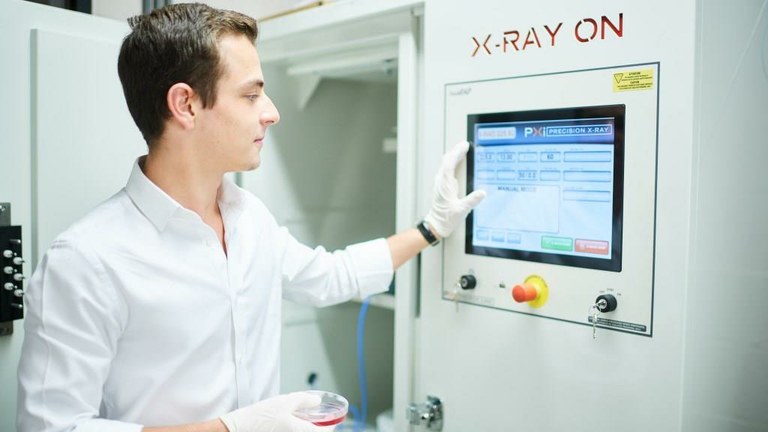
' P H Y S I C S O F L I V I N G O R G A N I S M S ' F O C U S
Man has always been exposed to ionising radiation from natural sources – cosmic rays which reach the Earth’s surface, radioactivity from radon, interstellar radiation during space missions, etc.
To limit the effects of these types of radiation, it is essential to understand the molecular and cellular mechanisms in the effects of ionising radiation, not only with regard to normal tissue, to protect those exposed to radiation as a result of an accident or their profession (radiologists, astronauts, etc.) but also with regard to cancer cells. In particular, such knowledge is used in radiobiology to develop personalised radiotherapy treatments and radiation protection strategies.
Y O U R O B J E C T I V E S
- To gain an in-depth understanding of the interactions between radiation and living cells.
- To develop your skills by means of pre-clinical studies in radiotherapy and radiation protection.
- To contribute to interdisciplinary research, both basic and applied, aiming in particular to link current developments in radiobiology with the future treatment of cancer.
- To discover new, emerging treatments using charged particles (proton therapy, hadron therapy, radio-sensitising agents, etc.) and associated fundamental studies (in vitro and in vivo tests).
- To use new findings in interdisciplinary projects (cell survival, flow cytometry, immunofluorescence after irradiation).
R E S E A R C H A N D T H E S I S
Research into the physics of living organisms consists of various elements: computer modelling of biological systems, the study of the effectiveness of different adjuvants in hadron therapy, the response of micro-organisms exposed to extreme doses of radiation, etc.
For instance, the following two topics were chosen by students as subjects for their theses: the development of a nano-object which can increase the effects of proton therapy, and the study of the reactive by-products of oxygen, produced during the irradiation of cancer cells.










